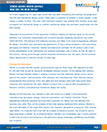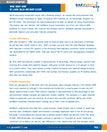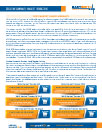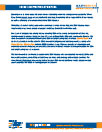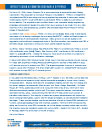The announcement of Mentor Graphics’ acquisition by Siemens is a huge step toward the convergence of the EDA and mechanical design markets. Siemens is a leading player in mechanical CAx design tools, while Mentor has an expansive EDA product portfolio. This acquisition shows that the future for the EDA industry is system-level design and that future is now.
]]>This week, Japanese technology conglomerate SoftBank Group announced it will purchase semiconductor IP powerhouse ARM in a cash deal worth approximately $32 billion. What does this massive deal mean for EDA users and vendors? Gary Smith EDA offers our view of this extremely noteworthy acquisition and its impact on the EDA and electronic design industries.
]]>21st annual write up of “must see” products at the 53rd DAC 2016. To post / reprint the list and/or use GSEDA logo, purchase the RV for $500. View the List for Free.
]]>2014 marked the first year of really solid growth for electronic system level (ESL) tools, after years of promise as the next big thing in EDA. It seems the tide is finally turning and ESL technologies may now be experiencing their long-awaited user adoption in earnest. For the first time, ESL growth was higher than that of either the downstream CAE market or the EDA market as a whole.
]]>Gary Smith EDA will continue its mission to support the EDA industry with our detailed market statistics and forecasting reports, consulting and advisory services, and strategy and analysis services under chief analyst Laurie Balch.
]]>20th annual write up of “must see” products at the 52nd DAC 2015. To post / reprint the list and/or use GSEDA logo, purchase the RV for $500. View the List for Free.
]]>Mary Olsson’s analysis of Mentor’s acquisition of Berkeley Design. It’s not about “industry consolidation” but an innovative move to outmaneuver its competition. The acquisition provides Mentor with innovative design engineering strategies and solutions needed to support the future revenue.
]]>7 page write up of the evolution of the ESL flow. Chronicles how the flow evolved with detailed figures from 2011 depicting how and when different tools were added to solve the flow with the most recent addition of emulation and its impact for the ESL flow moving forward through 2016.
]]>
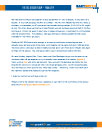 Download PDF[/message_box]
We have been trying to put together an ESL design flow for over a decade. It has been very elusive. If you want excuses, the flow is complex. The RTL flow initially had only four tools, a simulator, a synthesizer, an IC Layout tool and a static timing analyzer (V-S-M-Q in LSI Logic’s terms). The other issue was that we (I specifically) were all hardware guys and half of the flow is software. It took me years to learn how to speak software so I could start to communicate with the programmers. Fortunately, I had guys like Jason Andrews (Cadence) that could translate for me when I got stuck.]]>
Download PDF[/message_box]
We have been trying to put together an ESL design flow for over a decade. It has been very elusive. If you want excuses, the flow is complex. The RTL flow initially had only four tools, a simulator, a synthesizer, an IC Layout tool and a static timing analyzer (V-S-M-Q in LSI Logic’s terms). The other issue was that we (I specifically) were all hardware guys and half of the flow is software. It took me years to learn how to speak software so I could start to communicate with the programmers. Fortunately, I had guys like Jason Andrews (Cadence) that could translate for me when I got stuck.]]>We have been trying to put together an ESL design flow for over a decade. It has been very elusive. If you want excuses, the flow is complex. The RTL flow initially had only four tools, a simulator, a synthesizer, an IC Layout tool and a static timing analyzer (V-S-M-Q in LSI Logic’s terms). The other issue was that we (I specifically) were all hardware guys and half of the flow is software. It took me years to learn how to speak software so I could start to communicate with the programmers. Fortunately, I had guys like Jason Andrews (Cadence) that could translate for me when I got stuck.
Finally at DAC 2013 there were enough of us that we could start connecting the dots. I actually never got everyone in the same room together at the same time but it still got done. The next week I went back to Silicon Valley and had lunch with Frank Schirrmeister and Jason to finish off the picture. Yes, the last problem was on the software side of the flow.
So next Monday, August 19th, Frank, Jason and Mike Gianfagna (a guy who focuses on the hardware side) will get together to try to explain what happened in a webinar (register). Frank wrote a blog with some background. Now we aren’t the geniuses (certainly not me) that did the hard work; we just all knew who those geniuses were. As the old saying goes, “It’s not what you know but who you know that counts”. Therefore, I will try to thank all of the visionary people that helped to put this flow together.
I hope you can join us and have some fun.
Please come to the webinar with your questions or ask them in the comments of this blog or send me an email to [email protected].
]]> Download PDF[/message_box]
I had lunch with Sean Murphy this week. For those who don’t know Sean, he is one of the few vision guys in EDA. He always gets me thinking, which is hard during the dog-days of summer. Sean isn’t active in EDA presently; he is using his talents to help a very confused Medical market as there are not many chances to help the EDA industry right now (and get paid for it). So we spent lunch bemoaning the sorry state of the Electronics industry and trying to solve the world’s problems over a great Chinese lunch at the 4-5-6 restaurant.]]>
Download PDF[/message_box]
I had lunch with Sean Murphy this week. For those who don’t know Sean, he is one of the few vision guys in EDA. He always gets me thinking, which is hard during the dog-days of summer. Sean isn’t active in EDA presently; he is using his talents to help a very confused Medical market as there are not many chances to help the EDA industry right now (and get paid for it). So we spent lunch bemoaning the sorry state of the Electronics industry and trying to solve the world’s problems over a great Chinese lunch at the 4-5-6 restaurant.]]>I had lunch with Sean Murphy this week. For those who don’t know Sean, he is one of the few vision guys in EDA. He always gets me thinking, which is hard during the dog-days of summer. Sean isn’t active in EDA presently; he is using his talents to help a very confused Medical market as there are not many chances to help the EDA industry right now (and get paid for it). So we spent lunch bemoaning the sorry state of the Electronics industry and trying to solve the world’s problems over a great Chinese lunch at the 4-5-6 restaurant.
Actually the electronic industry isn’t in that bad of a shape; it is morphing into something new. Once I decided to write an article about that I stated to think about how to publish it to the widest audience. That brought me face-to-face with the state of the present electronics media. It actually is getting better. The “New Web-based Media”, which raised its ugly head at the turn of the century, has finally been proven to be bogus and a dedicated group of editors and bloggers are doing their best to revive the efficiencies of the past. And (sorry folks) it is the analyst and editors that are important, not the BRAND! And yes, it is far more efficient to go into an office every day and stand around the water cooler or coffee pot and create that critical mass that innovation requires. I have yet to get all of that talent to go to a Starbucks at the same time for a brainstorming session. The problem that persists is how this rag-tag group of heroes gets paid.
Right now these heroes, (Richard Goering, Michael Santarini, Ron Wilson, Paul Dempsey, John Cooley, Peggy Aycinena, Peter Clark, Brian Fuller, Brian Bailey, Ann Steffora Mutschler, Daniel Nenni, Clyde Maxfield, Ed Sperling, John Blyer, Dylan McGrath, Sol Gradman, Kevin Morris, Brian Moyer, Jim Turley, John Donovan, Paul McLennan, David Maliniak, Rick Merritt and many more) are doing their best to carry the flag. Technical Analysts are in the same state. I’m lucky; I went back to the old Dataquest business model, which still works, and being old I now get social security, plus I have a great wife that gives me medical benefits, still I can’t afford to take nearly as many trips, nor can I do the user surveys needed to do the full work I was doing at Gartner and still get Casey through college. But then neither can a Gartner analyst. You get what you pay for.
So today we are either getting by with about 60% of what we had in the past by using Company-sponsored media, and my hat’s off to the Cadence, Xilinx, Altera, Atmel, and Teledyne LeCroy’s of the world that fund that approach, they are doing their best, or we are using “coin-operated” analysis and media. Or we are just cutting back on our services to keep our price points affordable.
So there you have it. Since I am neither a blogger nor an editor, I guess I’ll just sit back and wait to see how this works out.
]]>